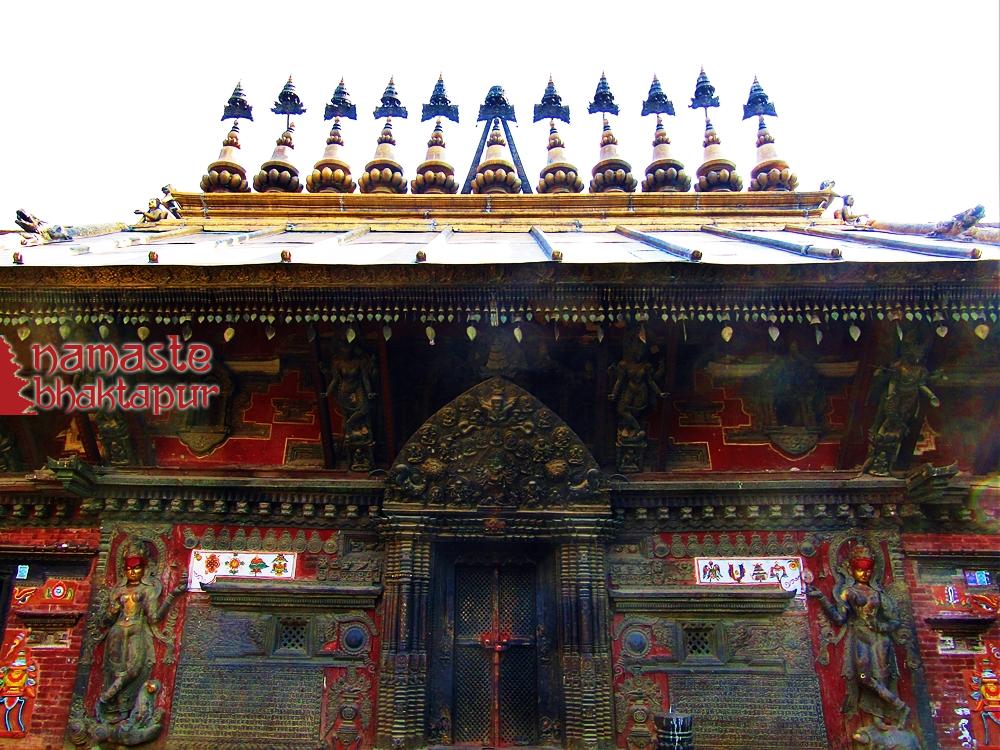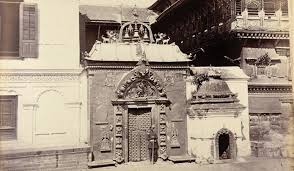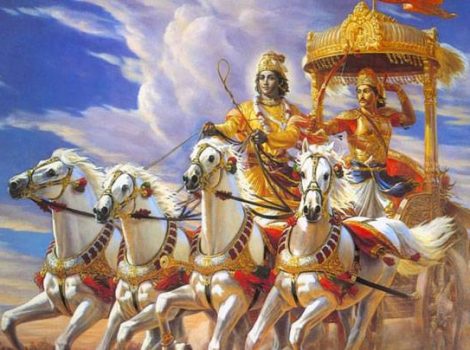
Mystic Story
One common account of the Goddess’s origins traces her back to the events narrated in the Rāmāyaṇa. It is said that the goddess was captured by the demon Rāvaṇa but eventually escaped and was later found by King Rāma who installed her at Ayodhyā. The other story states a different version
A competing account, noted by Vergati, states that Taleju was the secret deity of Rāvaṇa, worshipped by him because she bestowed such great power. Knowing that Taleju was the source of Rāvaṇa’s strength, Rāma captured the image of this goddess and drowned it in the Sarayū River. Hundreds of years later a prince of Simraongarh, named Nānya Deva, was advised by his astrologer that at the Sarayū riverbank he would find an object that would empower him to establish a kingdom north of Simraongarh.
From there the Goddess made her way to Simraongarh and became the tutelary divinity of King Harisiṁha Deva. It is said that King Harisingh Deva, took with him the Yantra (a geometrical diagram used in tantric worship) of the Goddess Bhawani, which his ancestor had brought with him from the South and installed it in Bhaktapur in Nepal. The Newari community, who are among the earliest inhabitants of the central Nepal region, were very closely connected with the Mithila region of North Bihar culturally, for hundreds of years. Hence, it is no surprise that the Newar community soon adopted the worship of Goddess Taleju Bhawani.

Artistic representation of the temple of Goddess Taleju Bhawani
Historian view
Historians believe that this divinity came from India to Nepal in the mid-14th century. Harishimha Deva was the king of Karnatak dynasty and originated from Ayodhya. He regained Terai Simrangrah, not far from present-day Simra. After the battle between Harishimha Deva and Ghiya-vd-din Tughlaq, they had to flee into the mountains and entered Nepal, bringing the deity with them. As per the description, the Goddess has four heads and ten arms.
Historians are generally in agreement with the Gopālarāja-Vaṁśāvalī, which states that King Harisiṁha Deva died on his way to Bhaktapur from Dolakha, east of the
Kathmandu Valley. Whatever the case may be, by the time of Jayasthiti Malla (ce 1382-95) Taleju, the mysterious goddess on high, had been selected as the king’s personal protectress and object of worship. Her power was so great that a Tibetan militia even sought to take her by force.
According to local folklore, it is said that once Goddess Bhawani appeared to King Nanyadeva at night and gave him a Yantra, as well as a Mantra to activate that Yantra (a tantric practice). She told him it would bring him unimaginable wealth and power. It was this Yantra, that Harisingh Deva took with him to Nepal, and installed there. The deity ’Taleju Bhawani’, with four heads. Hence the first deity was kept and worshipped in Bhaktapur. To this day armed guard protects the entrance.

mul chowk towards the main temple

The three temples
Taleju Bhawani is one of the most powerful goddesses and is also regarded as the clan goddess of the Malla kings who ruled Nepal from the 12th to the 18th century because of which the temple of the goddess is present in three major cities, Kathmandu, Bhaktapur and Patan.

The temple of Taleju Bhawani is housed in the Bhaktapur Durbar Square premises and is the oldest of all three temples. It is located in Mulchok Court near the Golden Gate and traditionally, it was opened only for the ruling kings. However, the temple is now open to all Hindus and although everyone could visit the temple, non-Hindus are not allowed inside. The archways and the window frames are beautifully and artistically carved that reveals the artistic and architectural details from the past centuries.
Built in 1667 during the reign of King Shree Niwas Malla, another temple of Taleju Bhawani is located in the center courtyard of Patan Durbar Square.


Just across the temple is the Taleju Bell which was installed in 1736 by King Vishnu Malla so that the petitioners could alert him when they had filed a grievance or complaint.

The third and (main temple) of Taleju Bhawani is situated in Trishul Chowk in Kathmandu Durbar Square. The temple was constructed in 1564 by King Mahendra Malla and is the most visited of all three temples of the goddess. It is said that the temple was built after the suggestion of the goddess herself in the shape of a yantra, a musical diagram that is said to have magical powers. The South Association for Regional Cooperation states that the goddess made a special appearance for the temple’s dedication ceremony. According to the legend, the goddess came disguised as a bee.






